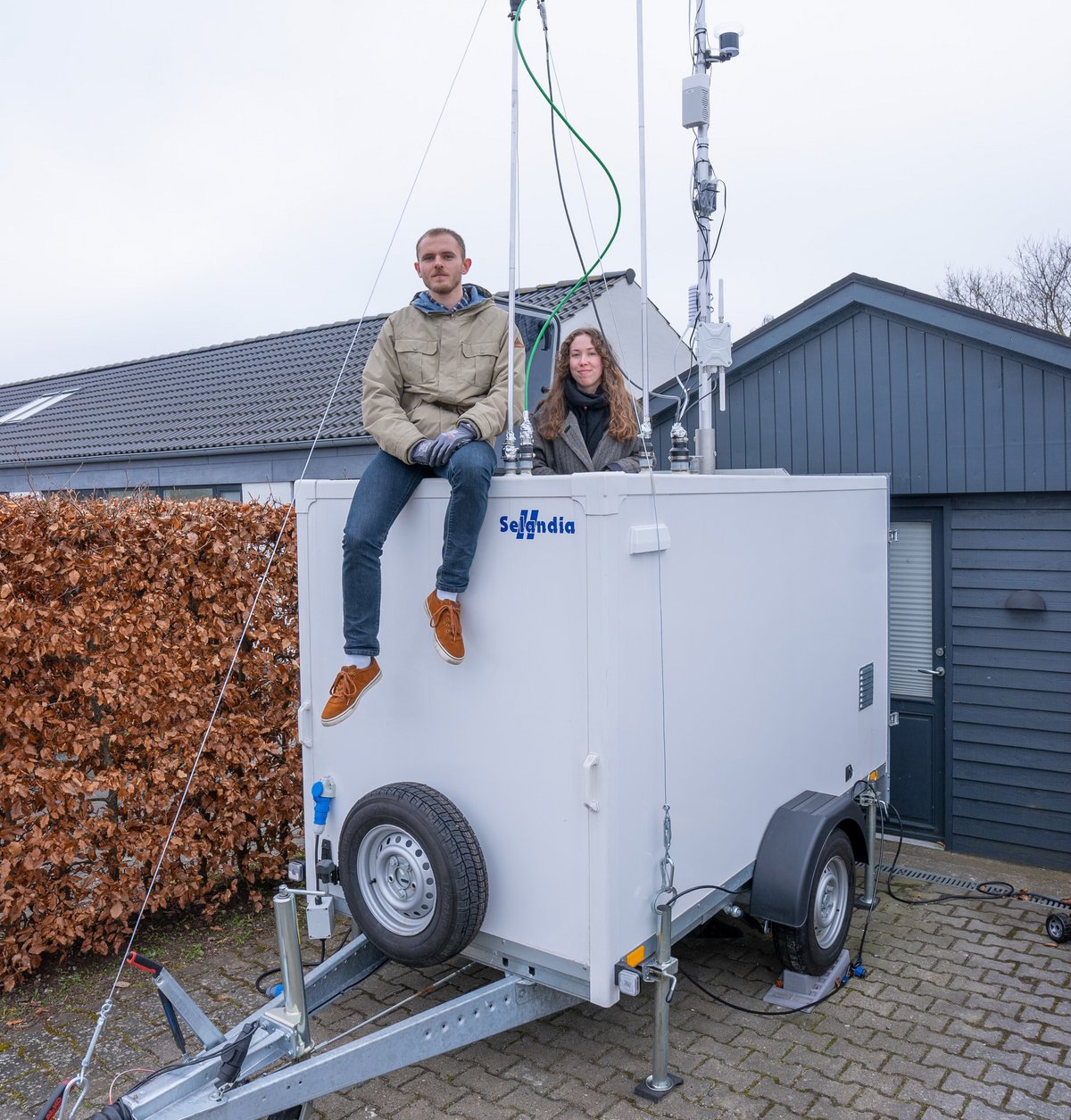On a small residential street in Mårslet just outside Aarhus, you will find a driveway with what looks like a normal, white enclosed trailer parked in it. Normal, if it wasn’t for the sea of antennas and other technical do-dads sticking five meters out of its roof.
The trailer is a sort of rolling laboratory that can be moved anywhere and then used to calibrate the sensors placed in areas where it is necessary to measure particle pollution.
And at the moment, that area is in Mårslet, where the Danish Technological Institute is running the project Renere Brænderøg in collaboration with Aarhus Municipality and with funding from the Danish Environmental Protection Agency. The aim is to identify which technologies are the most effective at reducing emissions from wood-burning stoves, and this requires stable and reliable measurements of the number of particles in the air.
However, it can be quite expensive to accurately measure particle pollution. So, the project uses low-cost sensors permanently suspended from lampposts on the residential street and the rolling laboratory as reference equipment to calibrate the sensors.
"Low-cost sensors can be very sensitive to humidity for example, and if it rains, the data may be unreliable. However, with the help of our mobile measuring station, we have actually managed to calibrate the sensors in a way that means we can use these cheap sensors to obtain relatively accurate data, even if there’s high humidity. This is of major importance to this project and other projects in the future, because we can use these sensors to collect data from a much larger area than before,” says Jakob Sandfeld, a chemical engineering student at Aarhus University who’s Master's thesis, in collaboration with the Danish Technological Institute, is based on the measuring station.

Jacob and his fellow student Laura Gjerløv Svendsen built the measuring station themselves. Both are studying chemical engineering, but are at different stages of their programmes. Laura is on the 6th semester of the Bachelor of Engineering programme in chemistry, and Jakob is on the 4th and final semester of the MScEng programme in Chemical Engineering and Biotechnology.
This project is Jacob’s Master’s thesis project, while Laura joined the project as an intern and is now affiliated with the project through her student job.
"I got a lot out of my internship because I was given the responsibility of building the measuring station together with Jacob. We were given free reign to design it as we saw fit, and it helped open my eyes to what I want to do in the future,” says Laura.
She has previously had doubts about her choice of degree programme. After a two year sabbatical following upper secondary school, she was ready to get started with something, but she didn't know what.
"I come from a family where both my parents are craftsmen, so I didn’t know much about what it’s like to study at university. Nevertheless, it was something that I wanted to try, and since I liked mathematics and chemistry, I thought that the degree programme in chemical engineering would be a good fit," she says.
Jacob nods understandingly to this. He was also very unsure about what to study after upper secondary school, but he had a wonderfully passionate chemistry teacher, and he himself really enjoyed both chemistry and mathematics. He initially leaned more towards chemistry, but he liked the application-oriented element of the engineering programme, and the choice therefore landed on chemical engineering.
"And I’ve been passionate about it from day one," he says.
Jakob and Laura joined the project with the Danish Technological Institute at different stages of their degree programmes. Initially, the Danish Technological Institute was only looking for engineering students who wanted to do their Master's thesis as part of the project “Renere Brænderøg”, which is when Jakob signed on.
"I got in touch with the Danish Technological Institute even though they weren’t looking interns because I thought it sounded so exciting. I would like to do something good for the planet and I thought that cleaner air would be a good first step. And luckily, they could actually use me as an intern on the project," says Laura.
She completed her internship in December 2021, and was then offered a student job at the Danish Technological Institute, and since there is plenty to do in connection with the measuring station, she was able to keep working on it.
Jakob really wants to work with environmental technology once he graduates with an MSc in Engineering this summer.
“I think it’s very exciting, and the thought of making a difference really appeals to me. I’d like to help reduce pollution of the environment and nature, and I think trying to reduce particle pollution is a good place to start”, he says.